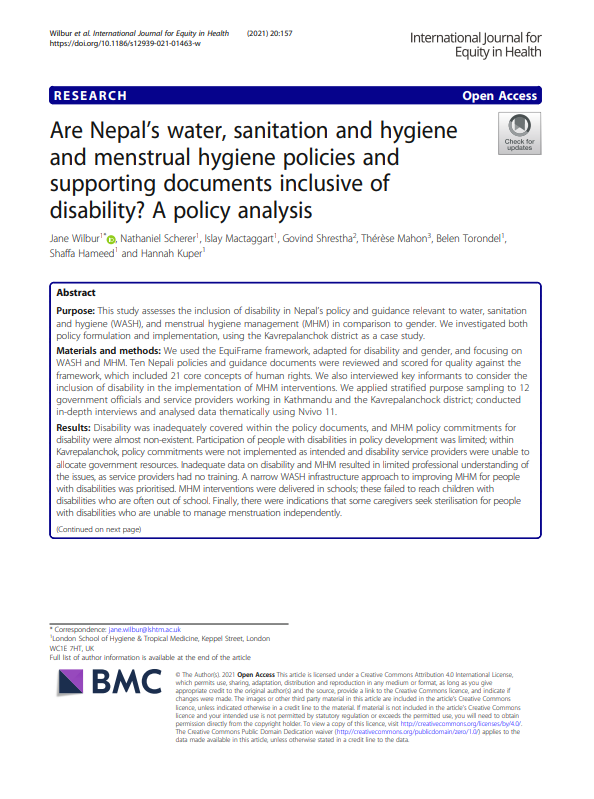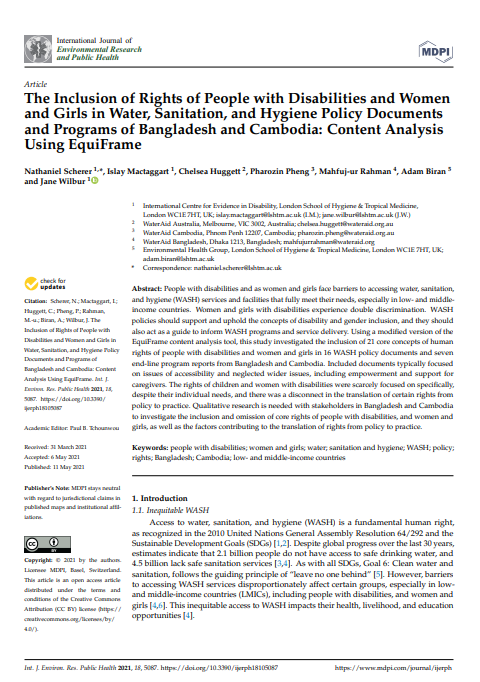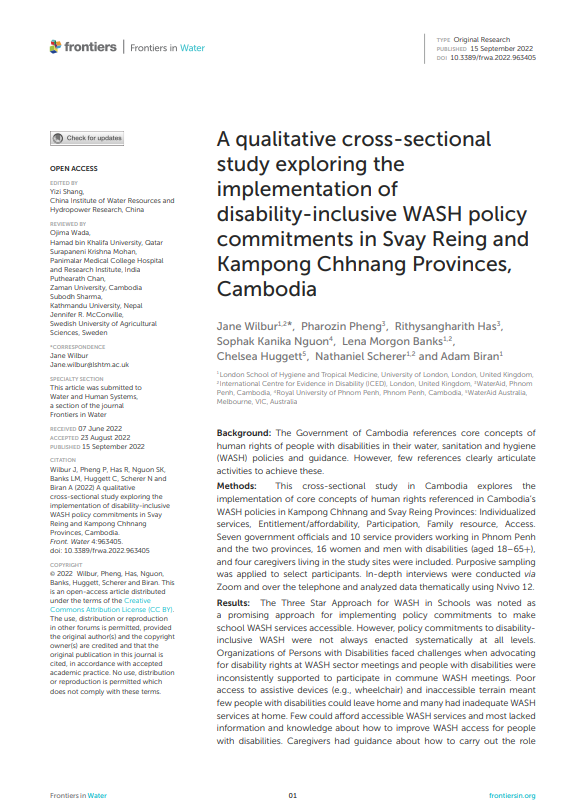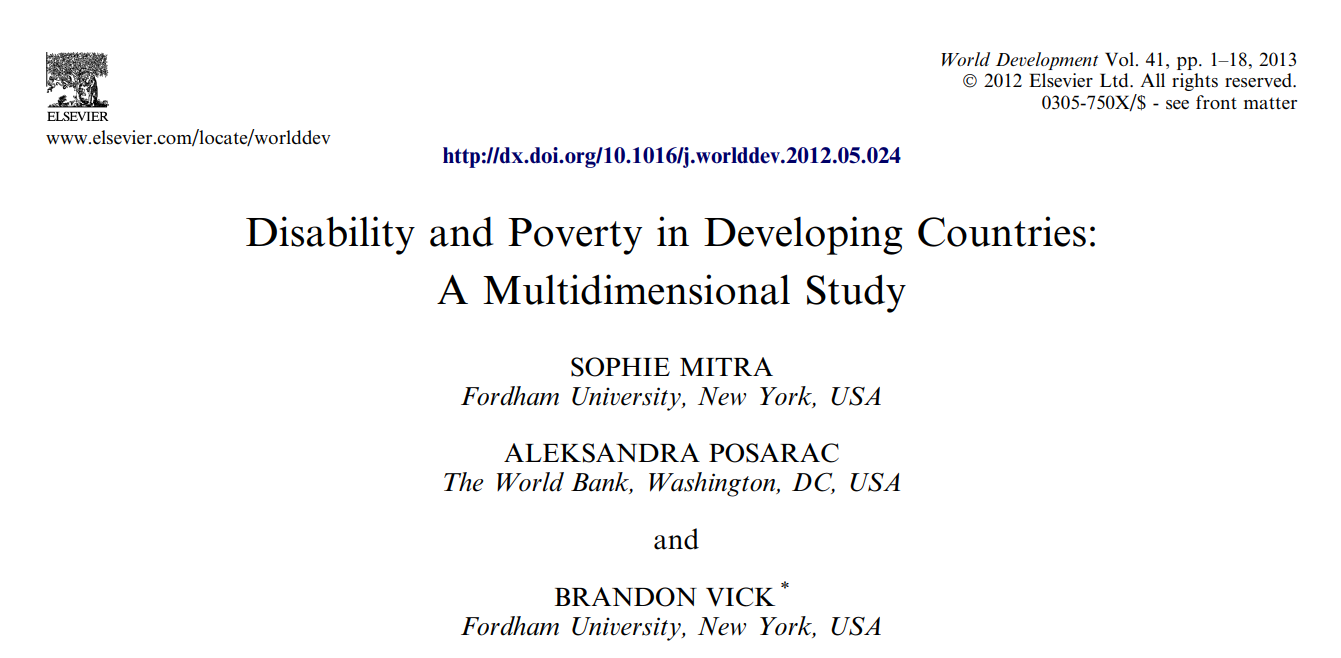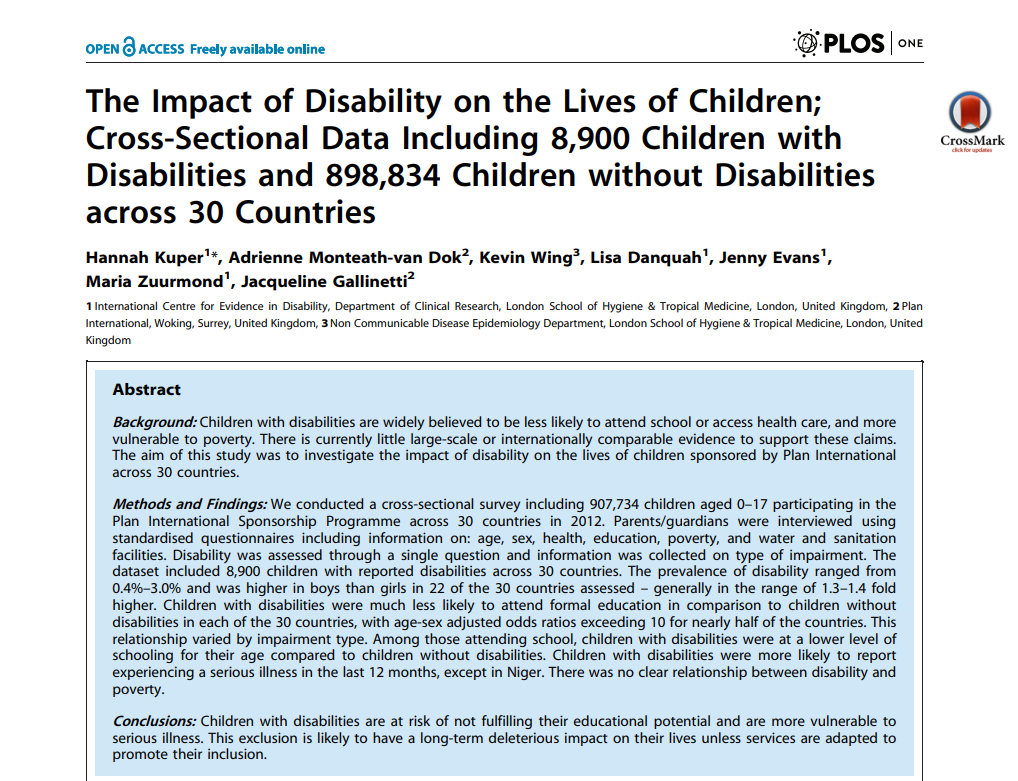
The impact of disability on the lives of children; cross-sectional data including 8,900 children with disabilities and 898,834 children without disabilities across 30 countries
Background: Children with disabilities are widely believed to be less likely to attend school or access health care, and more vulnerable to poverty. There is currently little large-scale or internationally comparable evidence to support these claims.
Background: Children with disabilities are widely believed to be less likely to attend school or access health care, and more vulnerable to poverty. There is currently little large-scale or internationally comparable evidence to support these claims. The aim of this study was to investigate the impact of disability on the lives of children sponsored by Plan International across 30 countries.
Methods and findings: We conducted a cross-sectional survey including 907,734 children aged 0-17 participating in the Plan International Sponsorship Programme across 30 countries in 2012. Parents/guardians were interviewed using standardised questionnaires including information on: age, sex, health, education, poverty, and water and sanitation facilities. Disability was assessed through a single question and information was collected on type of impairment. The dataset included 8,900 children with reported disabilities across 30 countries. The prevalence of disability ranged from 0.4%-3.0% and was higher in boys than girls in 22 of the 30 countries assessed - generally in the range of 1.3-1.4 fold higher. Children with disabilities were much less likely to attend formal education in comparison to children without disabilities in each of the 30 countries, with age-sex adjusted odds ratios exceeding 10 for nearly half of the countries. This relationship varied by impairment type. Among those attending school, children with disabilities were at a lower level of schooling for their age compared to children without disabilities. Children with disabilities were more likely to report experiencing a serious illness in the last 12 months, except in Niger. There was no clear relationship between disability and poverty.
Conclusions: Children with disabilities are at risk of not fulfilling their educational potential and are more vulnerable to serious illness. This exclusion is likely to have a long-term deleterious impact on their lives unless services are adapted to promote their inclusion.
